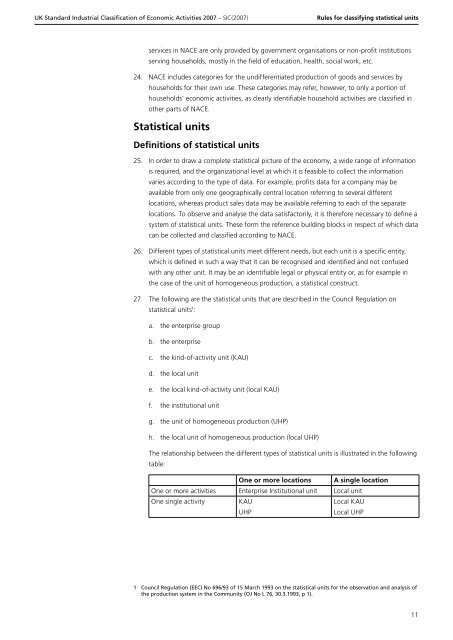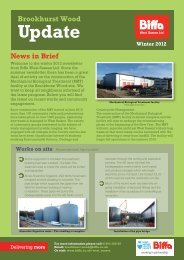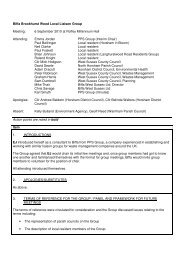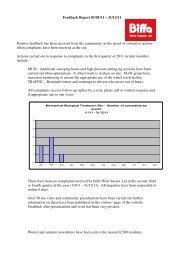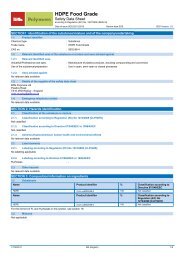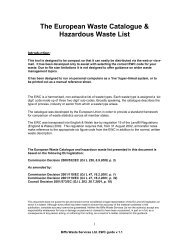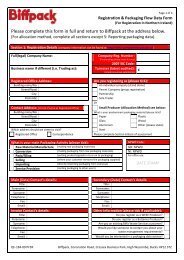detailed explanation for each SIC code - Biffa
detailed explanation for each SIC code - Biffa
detailed explanation for each SIC code - Biffa
You also want an ePaper? Increase the reach of your titles
YUMPU automatically turns print PDFs into web optimized ePapers that Google loves.
UK Standard Industrial Classification of Economic Activities 2007 – <strong>SIC</strong>(2007)<br />
Rules <strong>for</strong> classifying statistical units<br />
services in NACE are only provided by government organisations or non-profit institutions<br />
serving households, mostly in the field of education, health, social work, etc.<br />
24. NACE includes categories <strong>for</strong> the undifferentiated production of goods and services by<br />
households <strong>for</strong> their own use. These categories may refer, however, to only a portion of<br />
households’ economic activities, as clearly identifiable household activities are classified in<br />
other parts of NACE.<br />
Statistical units<br />
Definitions of statistical units<br />
25. In order to draw a complete statistical picture of the economy, a wide range of in<strong>for</strong>mation<br />
is required, and the organizational level at which it is feasible to collect the in<strong>for</strong>mation<br />
varies according to the type of data. For example, profits data <strong>for</strong> a company may be<br />
available from only one geographically central location referring to several different<br />
locations, whereas product sales data may be available referring to <strong>each</strong> of the separate<br />
locations. To observe and analyse the data satisfactorily, it is there<strong>for</strong>e necessary to define a<br />
system of statistical units. These <strong>for</strong>m the reference building blocks in respect of which data<br />
can be collected and classified according to NACE.<br />
26. Different types of statistical units meet different needs, but <strong>each</strong> unit is a specific entity,<br />
which is defined in such a way that it can be recognised and identified and not confused<br />
with any other unit. It may be an identifiable legal or physical entity or, as <strong>for</strong> example in<br />
the case of the unit of homogeneous production, a statistical construct.<br />
27. The following are the statistical units that are described in the Council Regulation on<br />
statistical units 1 :<br />
a. the enterprise group<br />
b. the enterprise<br />
c. the kind-of-activity unit (KAU)<br />
d. the local unit<br />
e. the local kind-of-activity unit (local KAU)<br />
f. the institutional unit<br />
g. the unit of homogeneous production (UHP)<br />
h. the local unit of homogeneous production (local UHP)<br />
The relationship between the different types of statistical units is illustrated in the following<br />
table:<br />
One or more locations A single location<br />
One or more activities Enterprise Institutional unit Local unit<br />
One single activity KAU<br />
Local KAU<br />
UHP<br />
Local UHP<br />
1 Council Regulation (EEC) No 696/93 of 15 March 1993 on the statistical units <strong>for</strong> the observation and analysis of<br />
the production system in the Community (OJ No L 76, 30.3.1993, p 1).<br />
11


